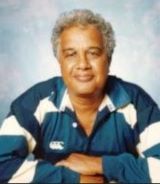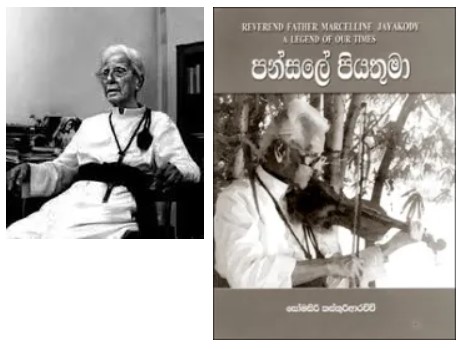Asian Musical Renderings from the Highest Realms: Two Aficianados in Conversation-by Michael Roberts

Source:Thuppahis
Somasiri Devendra, whose title in this item in The Ceylankan, 24/4: November 2022, is “A long, long way from the Bagpipes”…. with highlighting imposed by The Editor, Thuppahi

Last month, when I began a personal tribute to Barbara Sansoni, recalling how I first met her: “I was the only unmarried officer, in our ‘ship’ in Diyatalawa – Her Majesty’s Ceylon Ship “Rangalla” – living in solitary splendour in the Wardroom (the Officers’ Mess). That made me the official host to visiting dignitaries……” I was reminded of meeting, at the very same Wardroom, another cultural icon of the times, Rev.Fr. Marcelline Jayakodi OMI.
That Wardroom was, then, a spacious, gracious house, perched on the tip of a spur, looking down on the plain below. The location, silence, peace and tranquility charmed all those who visited us. I was privileged to live there. We were talking, in the verandah, on the first day of his visit: first, about the queer, mundane reason for his visit. Rev. Fr. Jayakody (Alumnus of “Viswabharati,” steeped in Bengali lyrical and Catholic choral music, Sinhala culture and Buddhism and welcomed by Sangha and laity alike as “Pansale Piyathuma”) was the Master in charge of the Band at St. Peter’s College, Bambalapitiya. The Management had decided that the Band should learn to play the Bagpipes from the Navy Pipe band. And, as the Pipers were at Diyatalawa training recruits, the boys were sent there to be introduced to the “infernal pipes” and the Master-in-charge was sent in charge of them.
Rev. Fr. Jayakody had no great regard for the scheme. He told me – no, not on that first evening, but later, when we were more comfortable with each other – “What Bagpipes for our boys!? Phillip Gunawardena is right – this is all ‘Thuppahi Culture!” Anyway, that accounted for his presence as our Guest.
Over a few days, we got to know each other and for us to realize that “One common note on either lyre did strike” and long were our talks each evening. So, it was Music that we were speaking of: namely, the current state of Sinhala music, and the emerging exotic influences. I knew just enough to keep up with him and he was pleasantly surprised that I had heard of the Viswanath Lowji, the Parsi eminence grise of John de Silva. We talked of Sunil Shantha’s tribute to Radio Ceylon at its Silver Jubilee (“Ridee seenu handala-la…mangala geetha gaya..”); of his own entry for the competition to choose a National Anthem.(“Baethiyena pem pala….Namadimu Lak Matha…”). He also spoke of the influence of Tagore’s Shantinikethan and Bengali melodies on the Sinhala music scene. Thus far, I could keep up with him.
But more gems of new information slipped from his lips.
“Do you know the words of India’s alternate national anthem “Vande Mataram?”
“I remember hearing it played by Subash Chandra Bose from Japanese-held Sio-nan during the war, but, no, I don’t know the words.”
“Well ,,,,,,’Namo Namo Matha’ is a translation of that. Look, there is nothing called ‘Bhakthi’ in Buddhism, is there? No, because it is connected to the worship of God …. But there is ‘Bhakthi’ in Hinduism…. in ‘Vande Mataram’…and in ‘Namo Namo Matha’. This is just one clue”
And so on……………….
*
While Sinhala music had been a formative feature of my childhood, I had recently discovered Indian classical music. During one of our more reflective pauses I asked him…
“Father, have you heard the new Indian Classical Music LP put out by HMV?…..”
He is surprised: he had not known.
“….. It’s the first in LP format and has Morning and Evening Ragas. Ustad Ali Akbar Khan on the sarod and Chatur Lal on the tabla, and Yehudi Menuhin introducing Indian Classical Music to the West.”
He is hooked!
“Would you like to hear it?” …“What? Now?”…“Yes! Now!”
– and he whispers “Yes!”
So, I carefully bring from my cabin my recently bought Hi-Fi player (a table model Pye “Black Box”) to the verandah and we listen together in silence: first to Menuhin’s introduction to the concept and structure of the raga and tala, counting aloud the 14-beat cycle of the tala that was being played. And then we let the magic of the Rag Sindhu Bhairavi on the sarod overwhelm us under the starry sky, a cool breeze swishing through the deodars providing the only accompaniment, for even the cicadas have stilled their stridency, in reverence.
After the performance we sit in silence. And, in the soft voice one speaks when the music dies, he muses: “….and to think I had to come to Diyatalawa, to a Navy camp, to listen to such heavenly music”.
****
An Exclamation from the Thuppahi Editor, 15 November 2022:
“Volaare! Caantaare!’ What a moment!” …. Two Erudite Aficianados on the same wavelength at the feet of musical inspirations from the highest realms!”
FURTHER NOTES
A: Fr. Jayakody’s reference to the bagpipes being a Western Thuppahi modality renders this tale an entirely appropriate item for presentation in this Thuppahi website! …. https://thuppahis.com/why-thuppahi/
B: Somasiri Devendra rose to a position of Commodore in the Sri Lankan Navy. While serving in the Navy, he was at the Naval HQ in Colombo Fort when one of Vijithamuni Rohana de Silva, one of the seamen in the guard of honour for Indian Prime Minister Rajiv Gandhi on the 30 April 1987 after he arrived to sign the Indo-Sri Lanka accord (forced unilaterally on Lanka). And it was Somasiri who put me in touch with Retd Lt. KH Perera, the officer in charge of the Guard of Honour…. https://thuppahis.com/2022/11/17/punishing-rajiv-gandhi-two-moments/#more-68058







